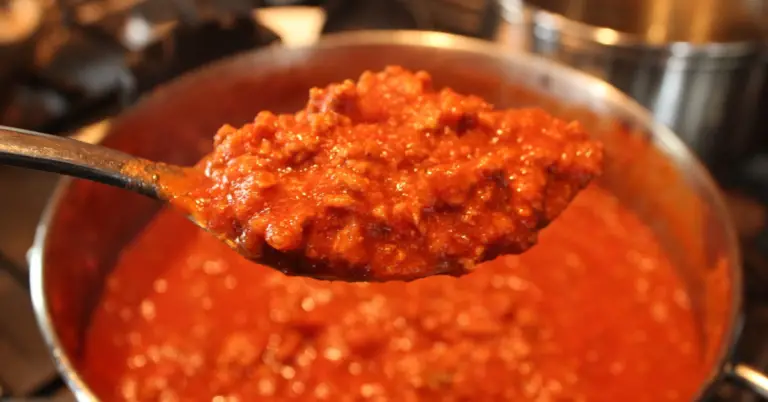Fusilli is a type of pasta originating from southern Italy, characterized by its typical elongated and spiral shape, either single or double, which is adept at holding sauce. It is a short pasta, traditionally made from durum wheat semolina.

The term “fusilli” doesn’t have any special meaning in Italian; it simply derives from the word “fuso” (spindle). In the past, a spindle was used to prepare handmade pasta without a machine. The pasta dough was twisted around a knitting needle to achieve the classic shape of the fusillo.
The fusilli you find in supermarkets today are not handmade but are mass-produced using extrusion machines like the one you see in the video below.
Fusilli is very popular in Italy, and is the third shape of pasta most chosen by Italians, click the link to see the ranking. and they are served in restaurants with different condiments. Outside Italy, pasta producers often use this name as a synonym for “rotini”, but fusilli has a spring-like shape whereas rotini is extruded into a twisted shape.
A simple and very Italian way to eat fusilli is fusilli with pesto Genovese sauce. A sauce of basil, pine nuts, and Parmesan cheese, is perfect for the shape of the fusilli. Although there are many other ways that we Italians eat pesto.
There are several types of fusilli here in Italy:
- short fusilli;
- pierced fusilli;
- long pierced fusilli;
- fusilloni;
- whole wheat fusilli;
- gluten free fusilli.
You can choose the fusilli you prefer based on the recipe you have to prepare, your dietary needs, and your personal taste. As I explained here, the different pasta shapes have the same taste, but the big difference can only be felt by tasting them, read the link and I’ll explain everything.
Read on for more curiosities about this pasta shape!
What sauce goes best with fusilli?
Fusilli is a match made in heaven with different kinds of condiments! Thanks to their structure, which holds the sauce really well, fusilli are perfect to be served with full-bodied and rich sauces. For example, you can try cooking fusilli with cream, sausage, and saffron or with a four-cheese sauce.
In Italy, this type of pasta is also widely served in combination with veggies, fresh tomato sauces, or cold pasta salads, perfect for the summer. Fusilli is therefore the perfect base for a low-calorie pasta recipe. Here there are some ideas for making a light, creative and tasty first course with fusilli:
- Fusilli with zucchini, ricotta and mint;
- Fusilli with chickpeas;
- Fusilli cherry tomatoes and tuna;
- Fusilli with rocket and almond pesto;
- Cold fusilli with feta, olives, and cherry tomatoes;
- Fusilli with broccoli and tofu.
As you can see, it’s easy to prepare a healthy, colorful, and tasty recipe with fusilli!
What’s the difference between rotini and fusilli?
This is probably going to shock you, but rotini does not exist in Italy! There are different types of fusilli, which I listed before, but no pasta has the name rotini. In the United States, however, rotini is a name that many pasta brands use as a synonym for fusilli. But is it really so?
No, actually fusilli and rotini differ in their shape and the difference is in the extruding process. While fusilli is made of flat strands of pasta that are later curled in spring-like shapes, rotini noodles are extruded into a spiral shape and have a slightly smaller and tighter twist.
Since they are still two very similar types of pasta, you can use both equally in a recipe that requires the use of fusilli.
How do you pronounce fusilli?
The next time you go to your favorite Italian restaurant, try to pronounce the word fusilli correctly: here is the transliteration of the sound: foo-zee-lee.
What region is fusilli from?
Today, fusilli is widespread throughout the Italian peninsula, but they are originally from southern Italy. In particular, before landing in Sicily, it seems that they originated in the Arab world.
Can I eat fusilli pasta with a spoon?
No, if you want to follow good manners, this is an unusual practice in Italy, where fusilli are eaten with a fork. Even at the restaurant, if you order a plate of fusilli, you will not be given a spoon, but you can of course request one.





![Difference between penne lisce and penne rigate? [Smooth vs Ridged]](https://whyitalians.com/wp-content/uploads/2022/10/penne-liscie-and-rigate-pack-768x402.jpg)

